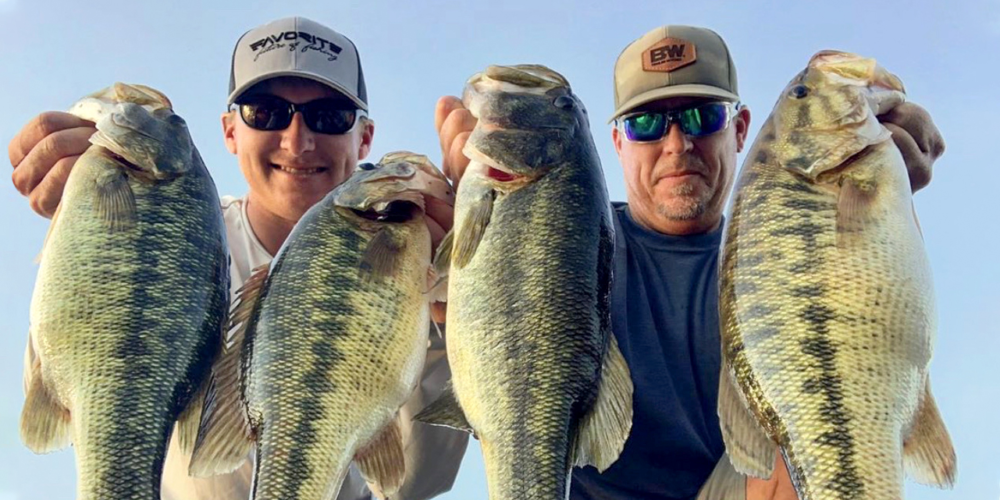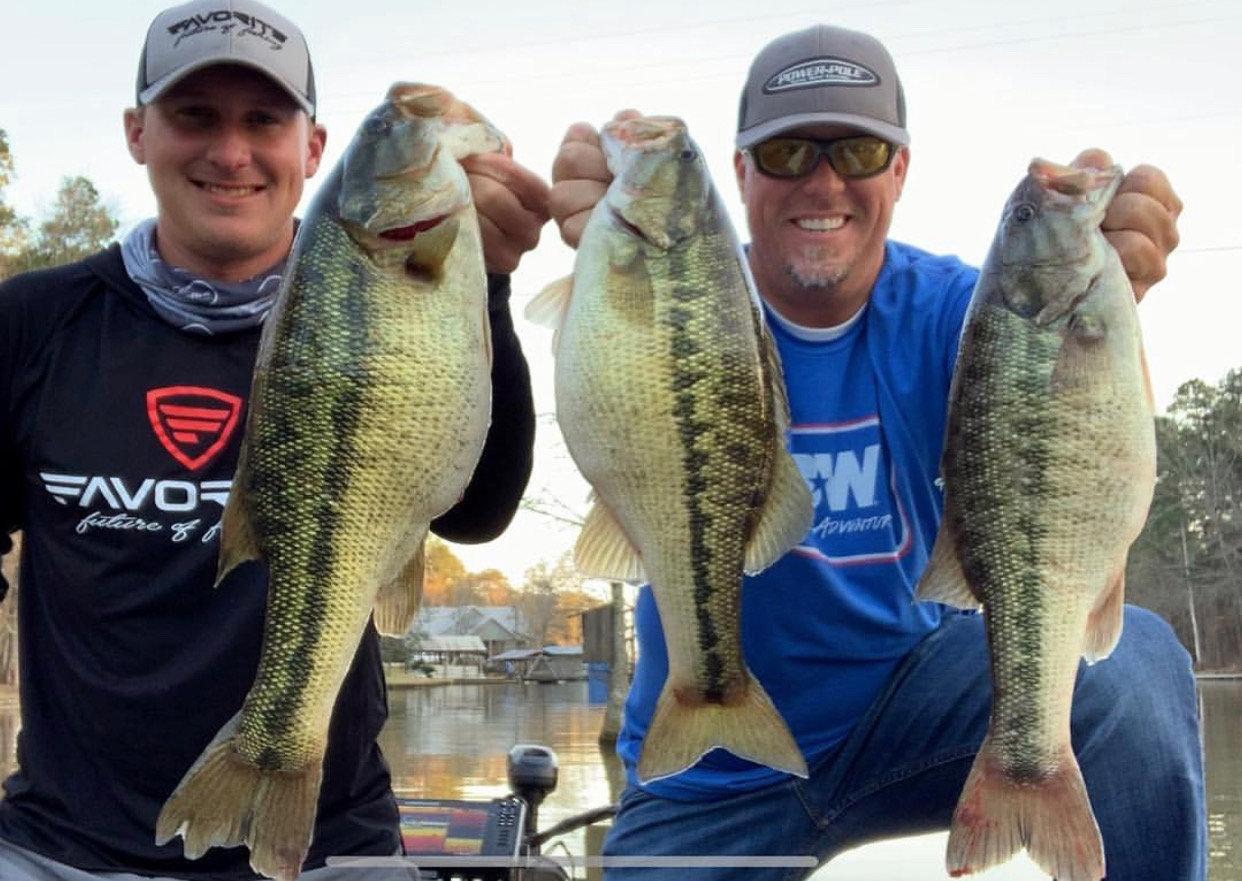Lane, Connell Living in Winter Spotted-Bass Wonderland on Coosa River

Coosa River spotted bass are notorious for being powerful fighters. The Coosa and its various impoundments – which stretch for almost 280 miles from its headwaters in northeast Georgia before emptying into the Tallapoosa River just northeast of Montgomery, Alabama – are THE place to chase spots during the winter months.
Two MLF pros and fishing buddies, Dustin Connell and Russ Lane, believe that fishing the Coosa during wintertime will provide anglers the best opportunities for catching big numbers and the largest spotted bass of the year.
“Big spots, as well as largemouth, will be staging up in the grass,” Connell said. “It’ll usually take 22 pounds plus for your best five fish to win a one-day tournament on the Coosa, and you never know, it may be spots or largemouth.”
Lane agrees with Connell that wintertime is “hands down” the key season to connect with the biggest fish.
“The overall size fluctuates so much on this system depending on the season, but a 3 3/4-pounder you catch in the summer will likely be a 5 1/2-pounder during the winter,” Land said. “They’re healthy, big, and school up with similar-sized fish. Plus, they’re aggressive in the winter.”
Where to Find ‘Em
Locating big wintertime spotted bass on the Coosa is as easy as finding current. Look for a variety of cover such as current breaks, hard-bottom/rocky offshore structure, and vertical cover such as bridge pylons, deep dock posts, standing timber and dam walls.
“These lakes are very, very good during the winter mainly because of water flow and current,” Connell confirmed. “Current dictates everything with them. Big spotted bass, as well as largemouth, relate to current year ‘round here, especially in winter.
“I’d say 90 percent of the tournaments I’ve won in the last 15 years have been with spotted bass, and I learned a long time ago that (catching spotted bass) is the consistent way of winning around the Coosa, and current is the key.”
Lane observes that rainfall and frontal activity also increases Coosa spots’ willingness to bite.
“One of the secret things – not so secret, really, for anglers who fish here – is how rain can impact the activity of the spots,” Lane said. “If the water temps are down in the high 40s to maybe 50 and the water is pretty clear, and then we get a southern front with warm rain, fishing can get good.
“When the front passes and we get that crystal-clear sunny sky, and actually the second day after the front passes is best, warmer water comes into the Coosa through ditches and runoff areas. It dirties the water a bit and the sun heats that warmer water up as well. Those areas are like a magnet for the spots.”

The Colder the Better
Lane’s most beloved “must-fish” time on the Coosa is when temperatures fall and fishing pressure disappears.
“My favorite time to fish the Coosa is when a nasty cold front comes through,” Lane admitted. “Opposite of the warm water from the warm rain, when the water temperature plummets, get on the water before the sun comes up and fish some of those rocky areas. Those mornings when nobody else wants to go out because it’s so cold are when some of the best fishing happens.
“As soon as the sun clears the horizon, it’s usually game on. You may need to wait a bit, but those big spots are going to feed on big gizzard shad. Like a wolf pack, they just feed. You can win a five-fish tournament in 30 minutes fishing the wolf packs on those biting, cold, calm mornings. Add a little breeze and the bite can last longer.”
Common depths to find the spots in the winter can vary depending on where you’re fishing, but in general, both Connell and Lane say the most common depths to fish range from 8 to 12 feet deep.
Best Baits for Big Spots
Both pros use the SPRO FatPapa 70 crankbait, Big Bite BB Kicker swimbait with a ¾-ounce Buckeye J-Will Jighead, and an Alabama rig with one 4 1/2–inch BB Kicker in the middle surrounded by four Big Bite 3-inch Suicide Shads.
“For my swimbaits and A-rigs, I use a little bit lighter line than most,” Lane said. “I use 16-pound Sunline Shooter and a 7-foot-2 heavy action Phenix Rods Recon. Most use heavier line, but the lighter line makes it easier to get the bait down and keep it down.”